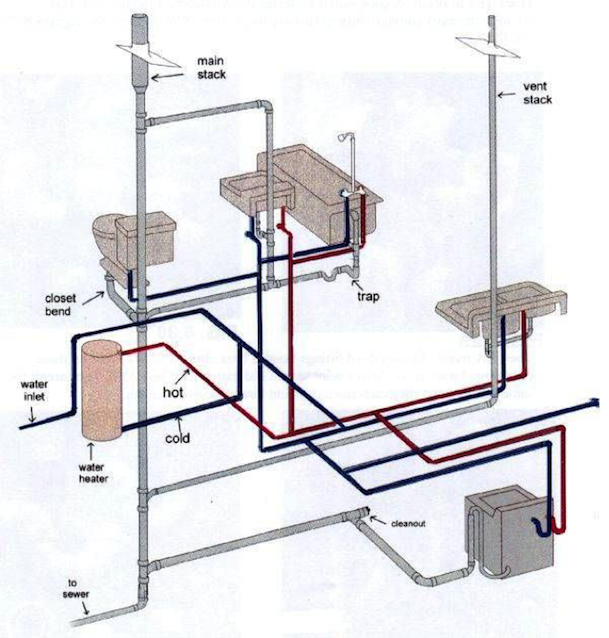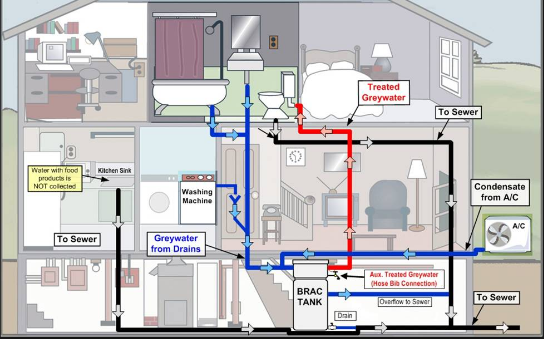A Guide to Your Property's Plumbing System Anatomy
A Guide to Your Property's Plumbing System Anatomy
Blog Article
What're your thoughts and feelings about Plumbing Installation 101: All You Need to Know?

Comprehending just how your home's plumbing system functions is crucial for every property owner. From supplying clean water for alcohol consumption, cooking, and showering to safely removing wastewater, a well-kept plumbing system is vital for your family's wellness and comfort. In this detailed overview, we'll check out the elaborate network that composes your home's plumbing and offer pointers on upkeep, upgrades, and taking care of common concerns.
Introduction
Your home's plumbing system is greater than simply a network of pipelines; it's a complicated system that ensures you have access to tidy water and efficient wastewater removal. Understanding its components and exactly how they work together can assist you stop expensive fixings and ensure everything runs efficiently.
Standard Parts of a Pipes System
Pipes and Tubing
At the heart of your pipes system are the pipelines and tubes that carry water throughout your home. These can be made from different materials such as copper, PVC, or PEX, each with its advantages in regards to longevity and cost-effectiveness.
Fixtures: Sinks, Toilets, Showers, etc.
Components like sinks, commodes, showers, and bathtubs are where water is made use of in your home. Recognizing just how these fixtures attach to the plumbing system assists in diagnosing problems and intending upgrades.
Valves and Shut-off Points
Valves regulate the flow of water in your pipes system. Shut-off valves are critical during emergencies or when you require to make fixings, allowing you to isolate parts of the system without interrupting water circulation to the entire home.
Water System
Key Water Line
The major water line connects your home to the community supply of water or a private well. It's where water enters your home and is dispersed to numerous components.
Water Meter and Pressure Regulator
The water meter steps your water usage, while a stress regulatory authority makes certain that water streams at a risk-free stress throughout your home's plumbing system, avoiding damage to pipes and fixtures.
Cold Water vs. Hot Water Lines
Comprehending the distinction between cold water lines, which supply water directly from the main, and hot water lines, which carry warmed water from the hot water heater, aids in repairing and preparing for upgrades.
Water drainage System
Drain Water Lines and Traps
Drain pipelines bring wastewater away from sinks, showers, and bathrooms to the drain or septic system. Catches protect against drain gases from entering your home and also trap debris that can trigger blockages.
Ventilation Pipelines
Air flow pipes permit air right into the water drainage system, preventing suction that might slow drain and cause catches to empty. Correct air flow is vital for maintaining the integrity of your pipes system.
Relevance of Appropriate Drainage
Ensuring correct drain avoids back-ups and water damage. Regularly cleaning up drains pipes and preserving traps can protect against pricey repairs and expand the life of your pipes system.
Water Heater
Kinds Of Water Heaters
Hot water heater can be tankless or traditional tank-style. Tankless heaters warmth water as needed, while storage tanks keep warmed water for immediate usage.
Updating Your Plumbing System
Factors for Updating
Upgrading to water-efficient components or changing old pipes can boost water high quality, reduce water bills, and boost the worth of your home.
Modern Pipes Technologies and Their Benefits
Check out modern technologies like wise leakage detectors, water-saving toilets, and energy-efficient water heaters that can conserve cash and decrease ecological influence.
Cost Considerations and ROI
Determine the in advance expenses versus lasting savings when thinking about pipes upgrades. Many upgrades pay for themselves with lowered utility expenses and less repair services.
How Water Heaters Connect to the Plumbing System
Comprehending just how water heaters link to both the cold water supply and warm water circulation lines aids in diagnosing issues like inadequate hot water or leaks.
Maintenance Tips for Water Heaters
Frequently purging your hot water heater to remove sediment, inspecting the temperature level setups, and evaluating for leakages can expand its life expectancy and enhance power performance.
Common Pipes Concerns
Leakages and Their Reasons
Leakages can occur due to aging pipes, loose fittings, or high water stress. Addressing leakages without delay protects against water damages and mold and mildew development.
Obstructions and Clogs
Clogs in drains and toilets are frequently caused by flushing non-flushable products or an accumulation of grease and hair. Making use of drainpipe screens and bearing in mind what goes down your drains pipes can protect against obstructions.
Indicators of Pipes Issues to Look For
Low water pressure, slow-moving drains pipes, foul odors, or abnormally high water costs are indicators of possible pipes issues that must be attended to quickly.
Plumbing Maintenance Tips
Regular Inspections and Checks
Schedule yearly plumbing evaluations to catch issues early. Seek indications of leaks, corrosion, or mineral build-up in taps and showerheads.
Do It Yourself Maintenance Tasks
Simple tasks like cleansing tap aerators, looking for commode leakages utilizing dye tablet computers, or protecting subjected pipelines in chilly climates can prevent major pipes concerns.
When to Call a Specialist Plumbing Professional
Know when a pipes concern requires professional competence. Attempting complex fixings without correct understanding can cause more damage and greater fixing prices.
Tips for Minimizing Water Use
Basic practices like repairing leaks promptly, taking much shorter showers, and running full loads of washing and recipes can save water and lower your utility costs.
Eco-Friendly Pipes Options
Take into consideration lasting pipes materials like bamboo for floor covering, which is durable and environment-friendly, or recycled glass for kitchen counters.
Emergency Readiness
Steps to Take During a Plumbing Emergency situation
Know where your shut-off valves lie and how to switch off the water supply in case of a ruptured pipeline or major leakage.
Significance of Having Emergency Situation Contacts Convenient
Keep get in touch with details for neighborhood plumbers or emergency situation services readily available for fast feedback during a pipes situation.
Environmental Effect and Preservation
Water-Saving Fixtures and Appliances
Installing low-flow faucets, showerheads, and toilets can dramatically reduce water usage without sacrificing performance.
Do It Yourself Emergency Fixes (When Suitable).
Temporary repairs like using duct tape to spot a dripping pipeline or putting a pail under a leaking tap can lessen damages till a professional plumbing technician gets here.
Final thought.
Recognizing the makeup of your home's plumbing system empowers you to preserve it properly, saving time and money on fixings. By following regular maintenance regimens and remaining educated about modern plumbing innovations, you can ensure your pipes system runs successfully for several years to come.
Exploring Your Homes Plumbing Anatomy
Water Supply System
Main Water Line: This is where water enters your home from the municipal supply or a private well. Water Meter: Typically located near where the main water line enters the property, it measures the amount of water used. Shutoff Valve: It s crucial to know where this is in case of emergencies. It allows you to turn off the water supply to the entire house. Pipes and Fittings: These distribute water throughout your home. Materials can include copper, PVC, or PEX. Drain-Waste-Vent (DWV) System
Drains: Located in sinks, showers, and tubs, these carry wastewater away. Traps: U-shaped pipes under sinks that hold standing water, blocking sewer gases from entering the home. Vents: Pipes that lead from the DWV system to the outside, preventing vacuum formation and allowing gases to escape. Sewer Line: Carries all wastewater from the home to the municipal sewer system or a septic tank. Fixtures and Appliances
Sinks, Toilets, and Showers Dishwashers and Washing Machines Water Heaters Maintenance Tips
Regularly check for leaks in exposed pipes and around fixtures. Inspect the water heater annually for signs of wear. Clean drains and traps to prevent clogs and odors. Know how to shut off water to individual fixtures. When to Call a Professional
Major leaks or burst pipes Installation of new pipes or fixtures Septic tank issues Remodeling projects that involve plumbing changes Conclusion
Understanding the anatomy of your home's plumbing is key to maintaining a functional and efficient system. Regular checks and knowing when to call in the experts can save you time, money, and stress.
https://www.mavyn.com/blog/exploring-your-homes-plumbing-anatomy

I'm very eager about Anatomy of a House: Understanding the Components and I really hope you enjoyed my page. Sharing is nice. You never know, you will be helping someone out. Thanks a bunch for being here. Kindly check up our blog back soon.
Quote Report this page